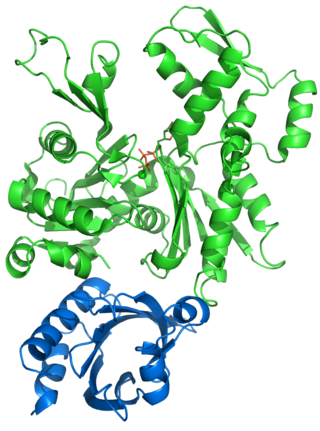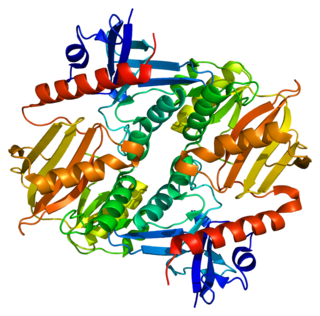| PCLO | |||||||||||||||||||||||||||||||||||||||||||||||||||
|---|---|---|---|---|---|---|---|---|---|---|---|---|---|---|---|---|---|---|---|---|---|---|---|---|---|---|---|---|---|---|---|---|---|---|---|---|---|---|---|---|---|---|---|---|---|---|---|---|---|---|---|
| |||||||||||||||||||||||||||||||||||||||||||||||||||
| Identifiers | |||||||||||||||||||||||||||||||||||||||||||||||||||
| Aliases | PCLO , ACZ, PCH3, piccolo presynaptic cytomatrix protein | ||||||||||||||||||||||||||||||||||||||||||||||||||
| External IDs | OMIM: 604918 MGI: 1349390 HomoloGene: 69111 GeneCards: PCLO | ||||||||||||||||||||||||||||||||||||||||||||||||||
| |||||||||||||||||||||||||||||||||||||||||||||||||||
| |||||||||||||||||||||||||||||||||||||||||||||||||||
| |||||||||||||||||||||||||||||||||||||||||||||||||||
| |||||||||||||||||||||||||||||||||||||||||||||||||||
| |||||||||||||||||||||||||||||||||||||||||||||||||||
| Wikidata | |||||||||||||||||||||||||||||||||||||||||||||||||||
| |||||||||||||||||||||||||||||||||||||||||||||||||||
Protein piccolo is a protein that in humans is encoded by the PCLO gene. [5] [6] [7]
| PCLO | |||||||||||||||||||||||||||||||||||||||||||||||||||
|---|---|---|---|---|---|---|---|---|---|---|---|---|---|---|---|---|---|---|---|---|---|---|---|---|---|---|---|---|---|---|---|---|---|---|---|---|---|---|---|---|---|---|---|---|---|---|---|---|---|---|---|
| |||||||||||||||||||||||||||||||||||||||||||||||||||
| Identifiers | |||||||||||||||||||||||||||||||||||||||||||||||||||
| Aliases | PCLO , ACZ, PCH3, piccolo presynaptic cytomatrix protein | ||||||||||||||||||||||||||||||||||||||||||||||||||
| External IDs | OMIM: 604918 MGI: 1349390 HomoloGene: 69111 GeneCards: PCLO | ||||||||||||||||||||||||||||||||||||||||||||||||||
| |||||||||||||||||||||||||||||||||||||||||||||||||||
| |||||||||||||||||||||||||||||||||||||||||||||||||||
| |||||||||||||||||||||||||||||||||||||||||||||||||||
| |||||||||||||||||||||||||||||||||||||||||||||||||||
| |||||||||||||||||||||||||||||||||||||||||||||||||||
| Wikidata | |||||||||||||||||||||||||||||||||||||||||||||||||||
| |||||||||||||||||||||||||||||||||||||||||||||||||||
Protein piccolo is a protein that in humans is encoded by the PCLO gene. [5] [6] [7]
Synaptic vesicles dock and fuse in the active zone of the plasma membrane at chemical synapses. The presynaptic cytoskeletal matrix (PCM), which is associated with the active zone and is situated between synaptic vesicles, is thought to be involved in maintaining the neurotransmitter release site in register with the postsynaptic reception apparatus. The cycling of synaptic vesicles is a multistep process involving a number of proteins (see MIM 603215). Among the components of the PCM that orchestrate these events are Bassoon (BSN; MIM 604020), RIM (RIMS1; MIM 606629), Oboe (RIMS2; MIM 606630), and Piccolo (PCLO).[supplied by OMIM] [7]
The protein product of PCLO called Piccolo has been shown to interact with number of proteins including GIT1, [8] the F-actin-binding protein Abp1, [9] PRA1, [10] TRIO, [11] DAAM1, [12] and Profilin. [13]
Recurrent mutations in this gene have been associated to cases of diffuse large B-cell lymphoma. [14] Recent evidence has shown that a homozygous, nonsense PCLO mutation is the genetic cause of the autosomal recessive neurodegenerative disorder, pontocerebellar hypoplasia type III (PCH3). [15]

Profilin is an actin-binding protein involved in the dynamic turnover and reconstruction of the actin cytoskeleton. It is found in most eukaryotic organisms. Profilin is important for spatially and temporally controlled growth of actin microfilaments, which is an essential process in cellular locomotion and cell shape changes. This restructuring of the actin cytoskeleton is essential for processes such as organ development, wound healing, and the hunting down of infectious intruders by cells of the immune system.

Profilin-1 is a protein that in humans is encoded by the PFN1 gene.

Dynamin-1 is a protein that in humans is encoded by the DNM1 gene.

Protein enabled homolog is a protein that in humans is encoded by the ENAH gene.

ARF GTPase-activating protein GIT1 is an enzyme that in humans is encoded by the GIT1 gene.

ARF GTPase-activating protein GIT2 is an enzyme that in humans is encoded by the GIT2 gene.

Regulating synaptic membrane exocytosis protein 1 is a protein that in humans is encoded by the RIMS1 gene.

ELKS/RAB6-interacting/CAST family member 1 is a protein that in humans is encoded by the ERC1 gene. The name ELKS is derived from "protein rich in the amino acids E, L, K and S"

Protein unc-13 homolog B is a protein that in humans is encoded by the UNC13B gene.

RABAC1 is a gene that in humans encodes the protein Prenylated Rab acceptor 1, also called PRA1, PRAF1, or RABAC1. It is highly conserved in eukaryotes. The protein is localized to Golgi and late endosomes, where it plays a role in vesicular trafficking, lipid transport and cell migration.

Regulating synaptic membrane exocytosis protein 2 is a protein that in humans is encoded by the RIMS2 gene.

Rab effector Noc2 is a protein that in humans is encoded by the RPH3AL gene.

Vesicle-associated membrane protein 1 (VAMP1) is a protein that in humans is encoded by the VAMP1 gene.

BR serine/threonine-protein kinase 2 is an enzyme that in humans is encoded by the BRSK2 gene.

ERC protein 2 is a protein that in humans is encoded by the ERC2 gene.
The ribbon synapse is a type of neuronal synapse characterized by the presence of an electron-dense structure, the synaptic ribbon, that holds vesicles close to the active zone. It is characterized by a tight vesicle-calcium channel coupling that promotes rapid neurotransmitter release and sustained signal transmission. Ribbon synapses undergo a cycle of exocytosis and endocytosis in response to graded changes of membrane potential. It has been proposed that most ribbon synapses undergo a special type of exocytosis based on coordinated multivesicular release. This interpretation has recently been questioned at the inner hair cell ribbon synapse, where it has been instead proposed that exocytosis is described by uniquantal release shaped by a flickering vesicle fusion pore.

Synapsin II is the collective name for synapsin IIa and synapsin IIb, two nearly identical phosphoproteins in the synapsin family that in humans are encoded by the SYN2 gene. Synapsins associate as endogenous substrates to the surface of synaptic vesicles and act as key modulators in neurotransmitter release across the presynaptic membrane of axonal neurons in the nervous system.

The active zone or synaptic active zone is a term first used by Couteaux and Pecot-Dechavassinein in 1970 to define the site of neurotransmitter release. Two neurons make near contact through structures called synapses allowing them to communicate with each other. As shown in the adjacent diagram, a synapse consists of the presynaptic bouton of one neuron which stores vesicles containing neurotransmitter, and a second, postsynaptic neuron which bears receptors for the neurotransmitter, together with a gap between the two called the synaptic cleft. When an action potential reaches the presynaptic bouton, the contents of the vesicles are released into the synaptic cleft and the released neurotransmitter travels across the cleft to the postsynaptic neuron and activates the receptors on the postsynaptic membrane.

The Center for Molecular Neurobiology Hamburg (ZMNH), founded in 1988, is an internationally recognized molecular neuroscience research center, part of the University Medical Center Hamburg-Eppendorf (UKE), Germany. Headed by Matthias Kneussel, the ZMNH is currently home to 190 scientists and staff from 20 different countries (2022).

Unc-13 homolog A is a protein that in humans is encoded by the UNC13A gene.